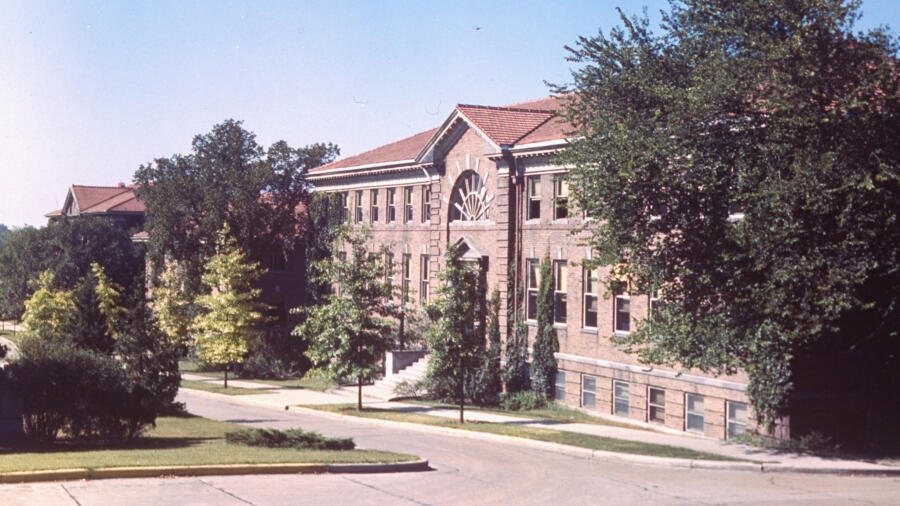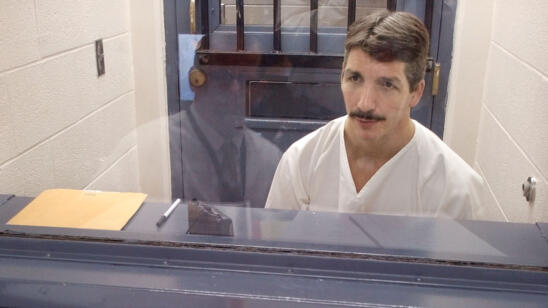On May 25, 1968, 18-year-old Christine Rothschild was headed to her dorm room at the University of Wisconsin-Madison when she was brutally murdered. Her best friend, Linda Tomaszewski, also a student on campus, knew who the killer was, but police ignored her pleas and he got away.
Michael Arntfield’s true-crime book “Mad City: The True Story of the Campus Murders America Forgot,” tells Tomaszewski’s story and her 50-year fight to find and bring Rothschild’s killer to justice.
Below, an excerpt from the book, used with permission, describes how Rothchild’s body was found.
“Eighteen-year-old coed found murdered yesterday has now been identified as Christine Rothschild, a native of Chicago.” It was an announcement that would alter Linda’s life course—a story that would change the criminal complexion of the Mad City forever.
A day earlier, just after noon on the twenty-sixth, three days before the end of term and the campus eerily quiet, a family from the nearby town of Waukesha—later made infamous in the Slender Man stabbing case of 2014—pulled its station wagon onto the private, winding roads of the property as part of a usual Sunday drive. In the late 1960s, it was apparently something of a Wisconsin state pastime to load the family into the car on rainy spring Sundays to tour the local UW campuses— La Crosse, Whitewater, and of course Madison—in order to take in the architecture and landscaping. It was a weekly sightseeing indulgence, an opportunity to unapologetically people watch.
[Stream episodes of The First 48 in the A&E app.]
Overnight on May 25 and into the following morning, the local temperature had dropped to the dew point in the Mad City. The moisture that had been held in the air for nearly a week was unleashed shortly after 8:00 a.m., leaving those locals who found themselves rained out of Little League games and spring picnics to take to the campuses and go driving—to aimlessly burn leaded fuel. As this particular Waukesha family’s car, having traveled from over an hour away, pulled onto UW’s flagship campus in the Mad City and then drifted past the gargantuan physics building known as Sterling Hall, the small boy in the backseat made a passing comment about a mannequin discarded in the grass near a hedgerow. Through the fogged-up rear window, as raindrops beaded down and broke up the clouded film that covered the glass, the small boy managed to catch a fleeting glimpse of what two earlier security perimeter patrols had apparently managed to miss. The boy’s parents didn’t make much of the utterance, dismissing it as either their child’s imagination or some remnant of the generally unremarkable year-end high jinks of UW physics students. Had they stopped to look closer, they might have altered the course of events to come. But they didn’t.
Four hours or so later, that same family was back home in Waukesha when Phil Van Valkenberg, senior science student and part-time lab assistant at Sterling Hall, popped in behind a hedgerow off the building’s main front staircase. It was a location that one wouldn’t know without either visiting or scoping out the building regularly. Indeed, Phil knew from experience it was a shortcut to a lower block of basement windows. It led to the lower lab rooms where he’d been working along with a weekend peer group, including a buddy of his who’d pulled the weekend detail cleaning and organizing the place. Phil, deciding to call on his friend just before 4:00 p.m. that afternoon, would normally have made his way through the main doors and then navigated the labyrinthine building down to the basement. On this occasion, he instead chose to turn right at the first landing on the steps where the hedgerow met the railing. He then jumped down behind the foliage and staircase landing to rap on the first visible window he found. It was the usual routine to get his friend’s attention to come out for a smoke or a quick bite—a sort of impromptu dinner-bell system. But when Phil vaulted down onto the wet grass this time, he lost his footing, the still-spitting rain having soaked the earth following a day’s worth of showers. After slipping forward slightly and landing in a frontward crouch, he laid eyes on, just inches from his face, what the family of four had dismissed as a mannequin just a few hours earlier. Said mannequin was actually Christine Rothschild—or what remained of her.
Phil Van Valkenberg had unknowingly fallen forward into a grotesque tableau that had been carefully arranged to provide a very specific message once found. Christine, her body left there since the early morning and exposed to a day of rain, had been intricately posed on her back with her head resting on the cement ledge of the foundation window on which Phil had been intending to knock. Beneath her bloodied head was a calling card, a man’s cotton handkerchief—big-city expensive, something sold nowhere in Madison. Its purpose there was puzzling, one part taunting clue and one part the killer’s twisted fantasy as he engineered a very specific image for both himself and for whoever found his victim. Christine’s head with the hanky underneath had been turned to the side and ravaged, both sides of her jaw shattered and her face pulverized. The first blow from whatever blunt object was used on her would have incapacitated her and knocked her out cold; she probably didn’t feel anything that came after. Gruesome as it was, what particularly caught Phil’s attention made him freeze with horror. Christine’s blue shift dress was matted with red crimson and gore; it was later confirmed that her torso had been stabbed a total of fourteen times with some comparatively obscure type of finely sharpened weapon the cops would later describe as “some type of medical utensil.” Translation: a surgical scalpel.
Pulling it together and with a massive dump of adrenaline, Phil retraced his route around the hedges that had kept the body hidden all day and made his way back to the front steps. He sprinted through the front doors of the hall, nearly putting his arm through the glass after pushing when he should have been pulling. He ran to the first open office he could find on the main floor and called the police—all lines on campus ringing directly into the campus PD headquarters rather than the Madison city switchboard. As luck would have it, there were two campus cops right around the corner—ETA less than a minute. Those two cops—Roger Golemb and Tiny Frey—were the same ones Christine had sought out for help just four days earlier. They arrived to find, and later reap, what their earlier indifference had sown. But as it turned out, they still weren’t finished doing wrong by Christine.
Trampling the scene and destroying evidence, no doubt unwittingly due to a lack of training in major crime-scene management, the first officers on scene also did precious little to contain what was by then a gaggle of gathering students ranging from concerned coeds to morbid curiosity seekers. When the ambulance arrived about a minute later, just three minutes after Phil Van Valkenberg’s call to police, the medics realized that rigor mortis still hadn’t set in. In spite of the gore and obvious signs of biological death, the medics ensured one final indignity to the girl who was once the go-to talent and cover girl for Chicago’s Teen Fashion News Sheet. The UW cops, again with zero semblance of training in crime-scene control, gave the medics free rein. Grabbing Christine’s mutilated body by the hands and feet and using a quick-rigged hammock carry, they rushed her down the slippery embankment to the road before flinging her—no gurney, no blanket, no nothing—into the back of the ambulance where she landed in a heap. Any lasting evidence on the body was at that very moment severely cross-contaminated with the vehicle interior and summarily destroyed. The medics then transported her the roughly 150 feet across the street to the UW campus hospital where death was immediately pronounced after missed evidentiary opportunities due to crime-scene blunders—blunders that were by that time still carrying on unabated back at Sterling Hall.
Excerpted from Mad City: The True Story of the Campus Murders America Forgot by Michael Arntfield. Text copyright © 2017 by Michael Arntfield. Published by Little A October 1, 2017. All Rights Reserved.
Related Features:
Janie Landers: Group Home Patient’s Murder Solved 38 Years Later With a Tiny Detail
Ashley Freeman and Lauria Bible: The Mysterious Murders of Teenage Best Friends
How Genetic Genealogy Helped Solve Christy Mirack’s Murder After More Than 25 Years


